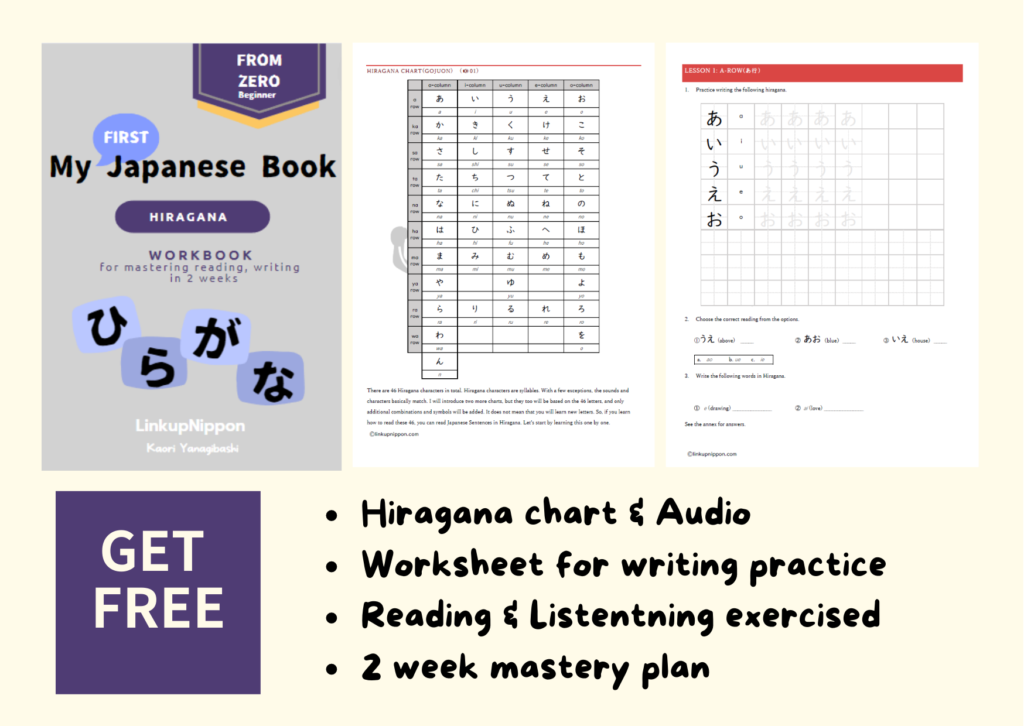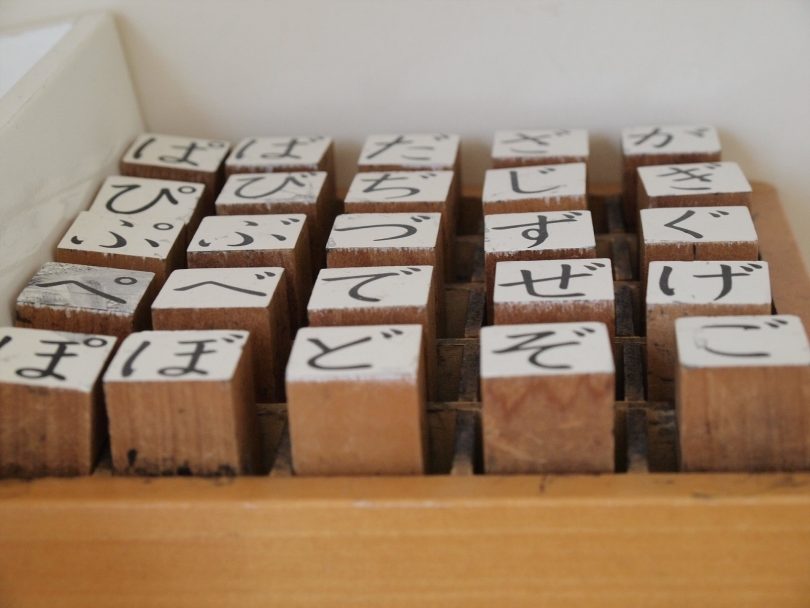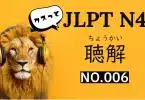In this article, I will introduce what hiragana is and how to learn hiragana to those who are learning hiragana from scratch. Linkup Nippon also has a free hiragana self-study course and a free Hiragana workbook. Become a free member and give it a try!
Table of contents
Learn Hiragana Origin
The Japanese language has three types of characters: hiragana, katakana, and kanji. The shape of the hiragana, katakana characters comes from kanji. Hiragana and Katakana letters represent a single syllable. On the other hand, Kanji represents meaning.
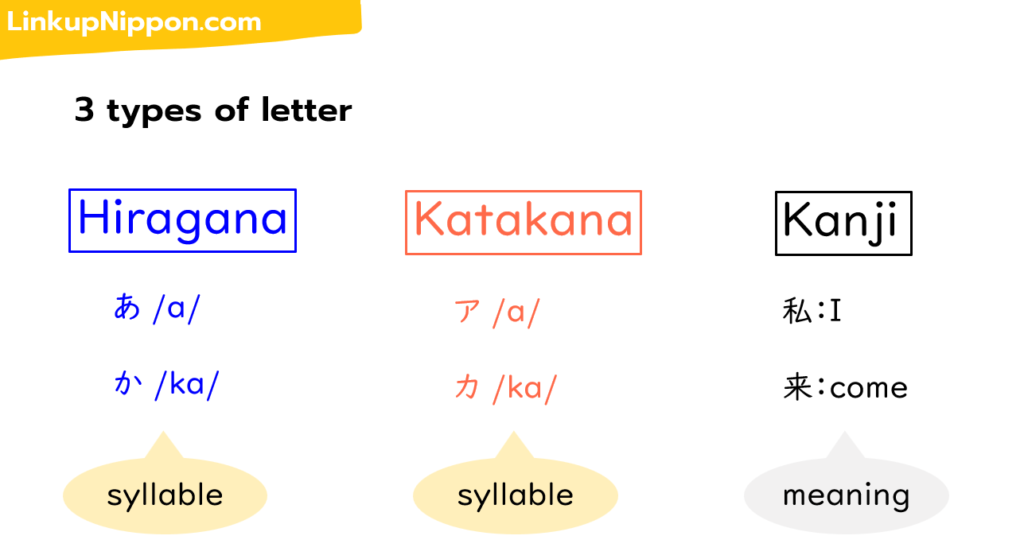
See the statement below. Hiragana is indicated in blue. Katakana are pink characters. It is mainly used for foreign words. Kanji characters are black.
And the small hiragana letters above the kanji are called “furigana”.
They are like a guide for those who cannot read kanji.
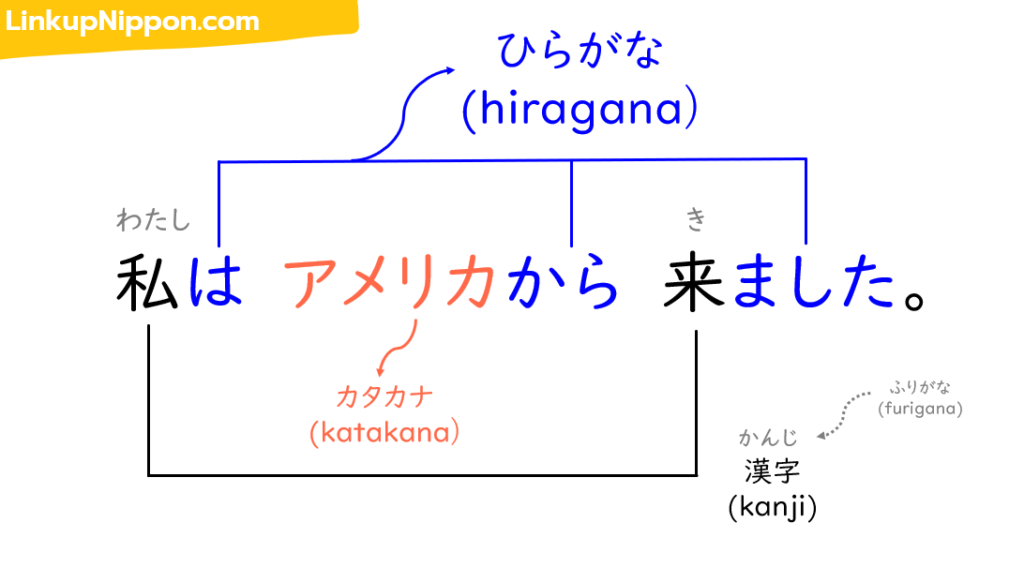
Should I learn Hiragana or Katakana first?
The answer is, first, hiragana. Then katakana, and then kanji. Hiragana and Katakana represent sounds, so you will be able to read Japanese texts. You can master each of these in about two weeks. Kanji is a different matter, and I recommend that you take the time to learn it day by day after learning hiragana and katakana .
Let’s Start to Learn Hiragana!
Do you want to learn Hiragana by self-study? We welcome absolute beginners interested in the Japanese language! You can learn to read, write effectively using video lessons, worksheets, and quizzes. If you have any questions, you can ask the teacher by comments.

Basic 46 Hiragana letters -Gojuon-
There are 46 Hiragana letters in total. Hiragana characters are syllables. With a few exceptions, the sounds and characters basically match. I will introduce two more charts, but they too will be based on the 46 letters, and only additional combinations and symbols will be added. It does not mean that you will learn new letters. So, if you learn how to read these 46, you can read Japanese Sentences in Hiragana. Let’s start by learning this one by one.
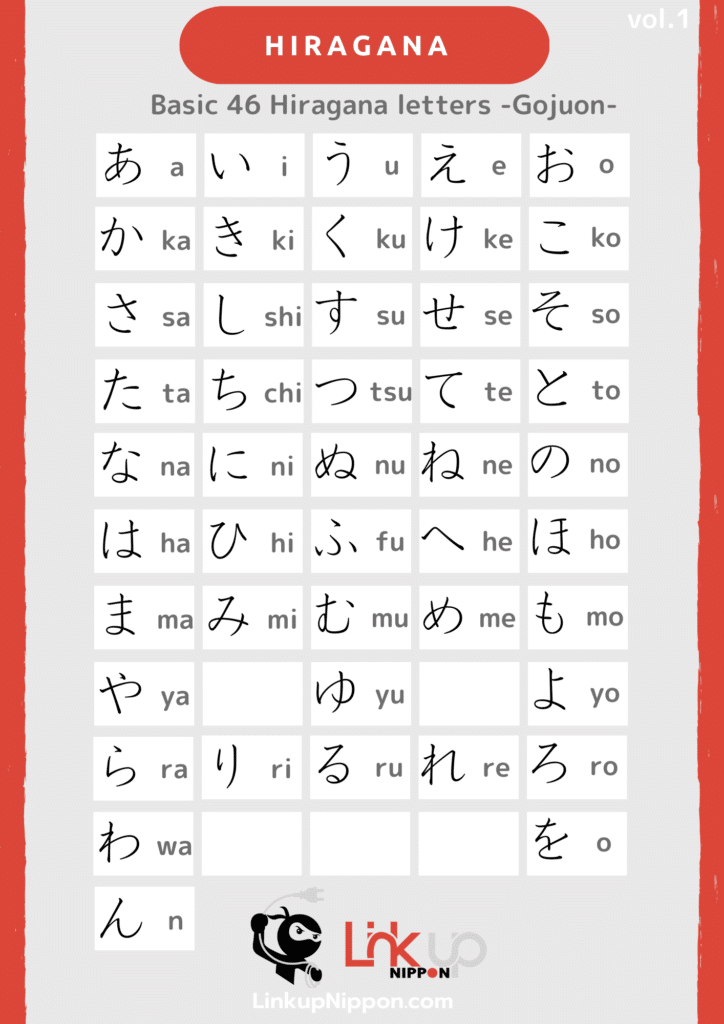
▶Audio for Basic 46 Hiragana letter -Gojuon-
How to read the Hiragana chart
The first row is the vowel, “a-i-u-e-o”. So the first line, “あ[a], い[i], う[u], え[e], お[o]” is the basis of everything. The bottom row is followed by the sound of each of these vowels and consonants combined together.
As an example, let’s look at the second row of ”かきくけこ”.
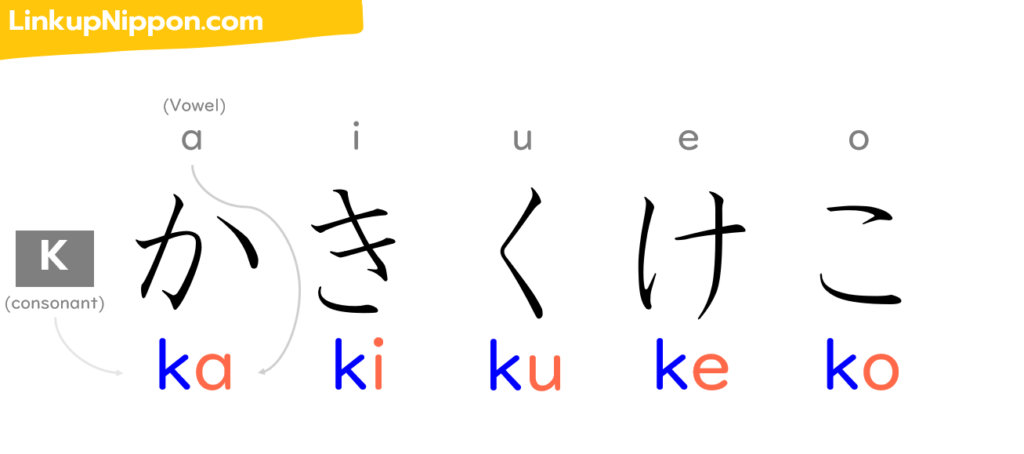
Voiced sound with ゛゜-Dakuon-
The letters themselves come from the basic 46 letters. Two types of symbols, ゛(ten-ten) and ゜(maru) are added to these to vary the sound.
In the case of ゛(ten-ten), it changes from a clear sound to a voiced sound. For ˚(maru), only the ha row; it changes to a ‘p’ sound.
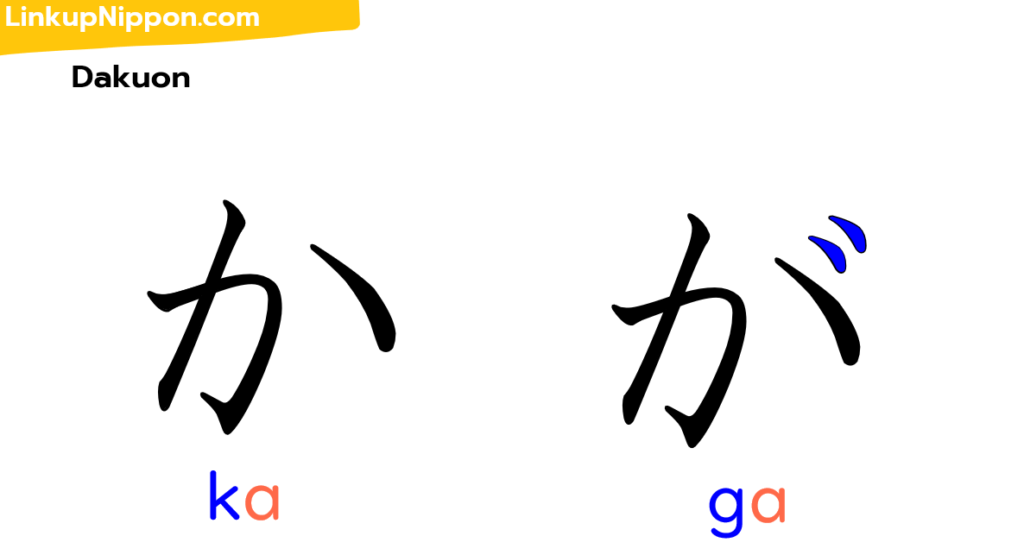
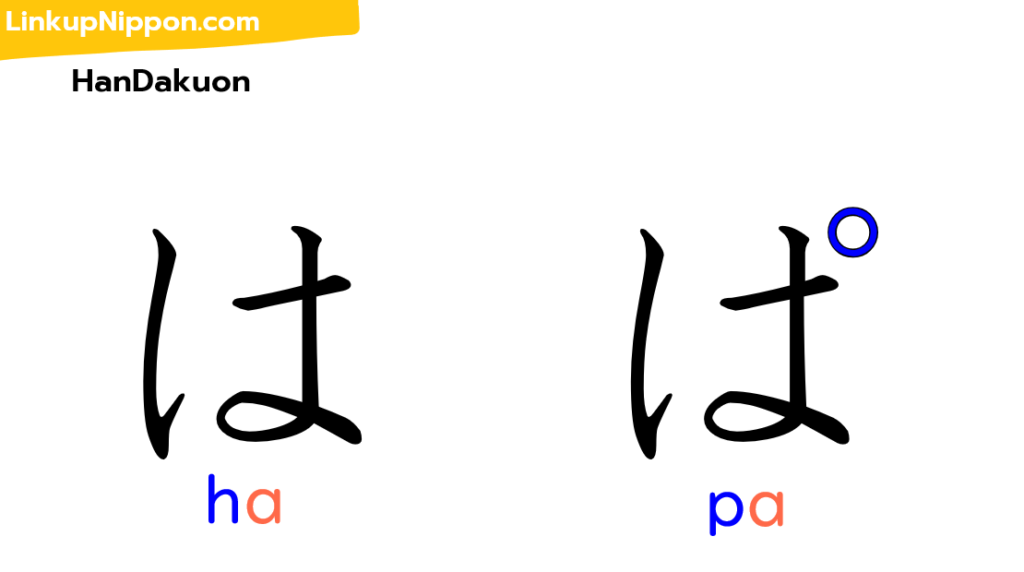
Contracted sound with small やゆよ-Youon-
Youon is a combination of a consonant in the [i]column and a “や[ya],ゆ[yu],よ[yo]” . “や,ゆ,よ” is written in small letters after the consonant.
For more details, watch this video!
Hiragana chart for voiced sound and contracted sound
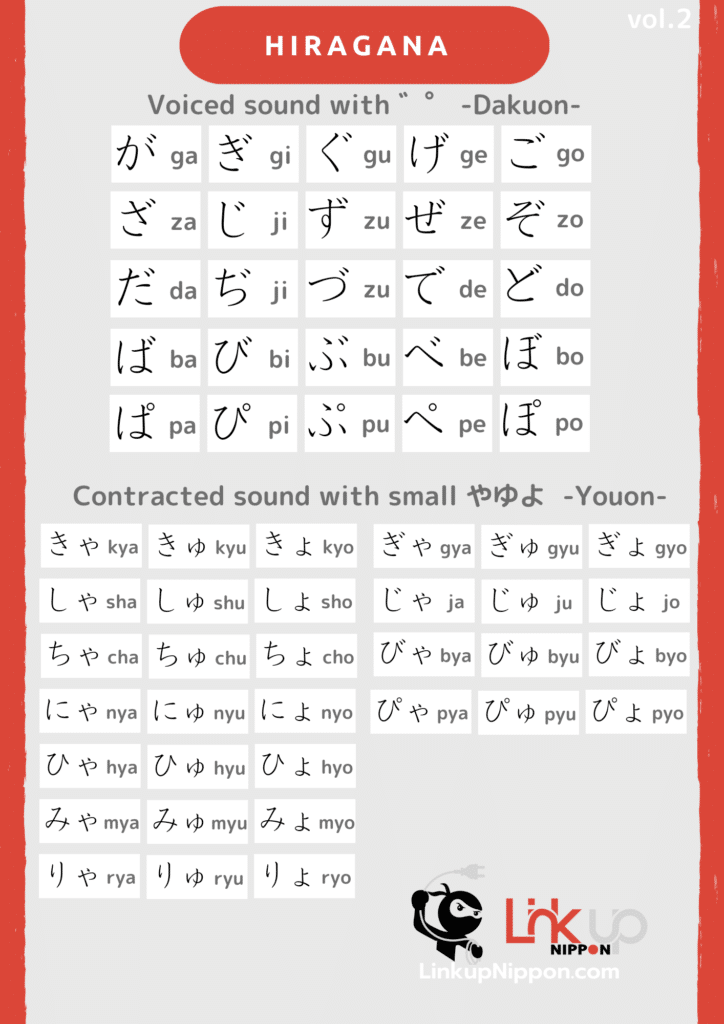
Audio for Voiced sound with ゛゜-Dakuon-
Audio for Contracted sound with small やゆよ-Youon-
Double consonants with small つ -Sokuon-
Small つ called as Sokuon are not pronounced with the breath held. The following consonants are then pronounced with a burst.

In addition, the Japanese language has the concept of a beat. It is important to note that different beats can mean different things for native Japanese speakers.
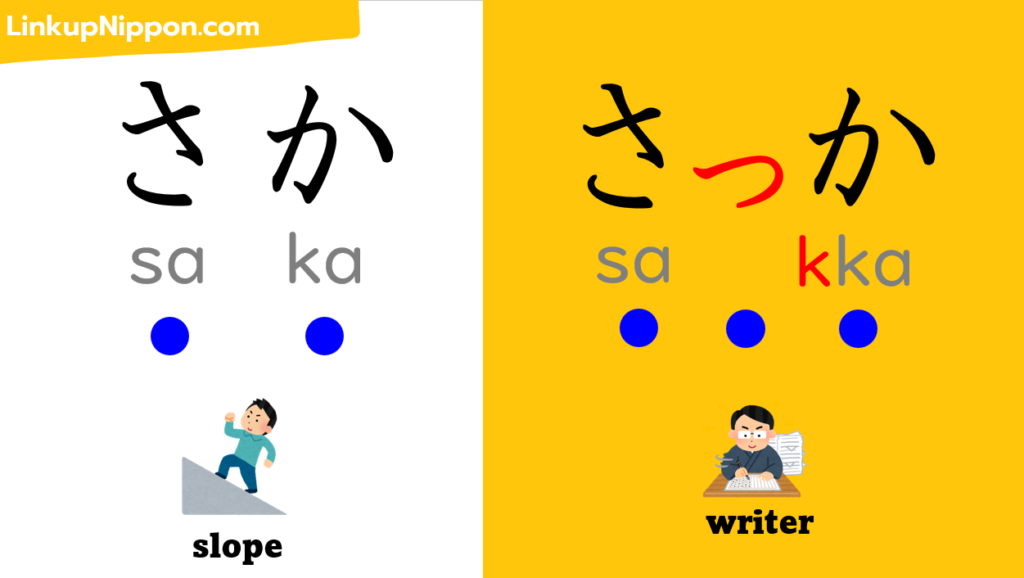
Long vowel -Chouon-
Long sounds are sounds made up of overlapping same vowels. The Japanese language has five vowels, each of which is existent. There are also slightly irregular rules for writing.

As Small つ called as Sokuon, the number of beats can change the meaning of the word. Careful attention should be paid to the length of the sound and the notation.

For more information, see this video!
Best way to learn Hiragana
The most important thing to say to learn hiragana is that it should be learnt intensively and in a short time.
Then it’s about learning how to read the chart and the order of the sounds. The chart is very logically constructed, so if you remember the order of the sounds, you can find them in the chart.With a melody like this, it is easy to remember.
Then I also think you need to practice writing in order to remember the form well.
